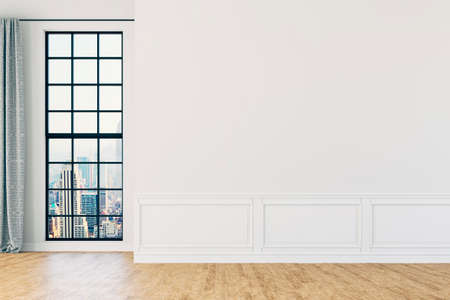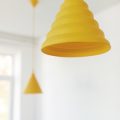Introduction: The Shift Towards LED Lighting in British Homes
In recent years, there has been a noticeable shift towards the adoption of LED lighting in British households. This transition is not simply a passing trend but the result of a combination of influential factors reshaping how people illuminate their homes across the UK. Government policy has played a pivotal role, with stricter energy efficiency standards and incentives encouraging homeowners to replace older, less efficient bulbs with modern LED alternatives. Economic considerations are equally significant, as rising electricity costs have prompted families to seek out lighting solutions that offer long-term savings on their energy bills. Furthermore, growing public awareness around environmental issues and the importance of reducing carbon footprints has spurred many Britons to make more sustainable choices for their interiors. As a result, LEDs are increasingly viewed not only as practical upgrades but also as an essential component of responsible home maintenance and modern living.
2. Understanding the Science: How LEDs Influence Interior Atmosphere
LED technology has transformed the way British homes are lit, moving beyond traditional bulbs to offer customisable lighting experiences that directly affect mood and energy consumption. The science behind LEDs lies in their ability to emit light at specific colour temperatures and brightness levels, both of which play a crucial role in shaping the atmosphere of interior spaces. In typical British interiors, where natural daylight may often be limited due to architectural styles or weather conditions, these parameters become especially significant.
Technical Aspects of LED Lighting
LEDs (Light Emitting Diodes) produce light when an electric current passes through a microchip, illuminating tiny light sources called diodes. Unlike incandescent bulbs, LEDs are highly efficient, generate less heat, and offer a broader spectrum of colours and intensities. Two key technical factors—colour temperature and brightness—determine how these lights impact the feel of a room.
Colour Temperature and Mood
Measured in Kelvin (K), colour temperature defines whether the light appears warm (yellowish) or cool (bluish). Warmer tones (2700K–3000K) are typically associated with comfort and relaxation, making them popular in British living rooms and bedrooms. Cooler tones (4000K–6000K), on the other hand, stimulate alertness and focus, better suited for kitchens or studies. Adjusting colour temperature can dramatically change the perceived cosiness or vibrancy of a space.
| Room Type | Recommended Colour Temperature | Mood Effect |
|---|---|---|
| Living Room | 2700K–3000K | Warm, Inviting |
| Kitchen | 3500K–4500K | Energetic, Focused |
| Bedroom | 2700K–3000K | Calm, Restful |
Brightness Control in British Interiors
The brightness of LED lights is measured in lumens rather than watts, reflecting actual light output. British homes often feature compact rooms with varying ceiling heights, so selecting appropriate lumen levels ensures comfortable illumination without glare or harsh shadows. Dimmable LEDs allow residents to adapt lighting intensity to activities—bright for reading or tasks, softer for relaxation—enhancing both practicality and comfort.
The Role of Smart Controls
Modern LED systems often integrate smart controls, enabling homeowners to adjust both colour temperature and brightness according to time of day or personal preference. This flexibility supports well-being by aligning artificial lighting more closely with natural circadian rhythms—a feature particularly valuable during long British winters when daylight is scarce.
In summary, understanding the science behind LED technology helps British homeowners create tailored environments that foster positive moods while maximising energy efficiency. Proper selection and control of colour temperature and brightness are essential for enhancing daily life within diverse UK home settings.

3. LEDs and Energy Consumption: Quantifying the Cost Savings
LED lighting has become a popular choice in British homes, not only due to its versatility in creating atmospheric interiors but also for its impressive energy efficiency. When comparing energy usage data, it is clear that LEDs outperform traditional incandescent and halogen bulbs by a significant margin. Typically, an LED bulb consumes up to 85% less electricity than a standard incandescent bulb and around 40% less than compact fluorescent lamps (CFLs). For UK residents, this translates into substantial savings on household bills. The average British home can reduce its annual lighting costs by over £30 simply by replacing all conventional bulbs with LEDs. Furthermore, LEDs have a much longer lifespan—often lasting over 15,000 hours—which reduces the frequency and expense of replacements.
Recent studies conducted across the UK reinforce these findings, showing that households making a full switch to LED technology experience both immediate and long-term financial benefits. Considering the ongoing rise in energy prices, the investment in LED lighting quickly pays for itself through lower monthly outgoings. Moreover, many local councils and government initiatives support the adoption of energy-efficient lighting as part of broader efforts to achieve carbon reduction targets.
For British homeowners and tenants alike, understanding these cost-saving opportunities is essential. By analysing their own energy usage data—available through smart meters or utility statements—residents can see first-hand how switching to LEDs impacts their consumption patterns. The result is not just a reduction in expenses but also a tangible contribution to more sustainable living practices across the UK.
4. Enhancing Wellbeing: Mood, Comfort and LED Lighting
Lighting plays a crucial role in shaping the psychological comfort and overall wellbeing of residents in British homes. Recent research highlights the significant impact that LED lighting can have on mood, productivity, and relaxation within domestic settings. Unlike traditional incandescent bulbs, LEDs offer unparalleled control over brightness and colour temperature, allowing households to tailor their environments according to specific activities or times of day.
The Psychological Impact of Lighting
Studies conducted by UK-based institutions such as the Chartered Institution of Building Services Engineers (CIBSE) indicate that lighting intensity and colour temperature directly influence mental states. Cooler white LEDs, often used in kitchens and home offices, promote alertness and enhance concentration—ideal for tasks requiring focus. In contrast, warmer tones are favoured in living rooms and bedrooms, supporting relaxation and encouraging a sense of cosiness during long British evenings.
Practical Experiences from British Homes
Homeowners across the UK have reported noticeable improvements in comfort after switching to LED technology. The flexibility to dim lights or switch between warm and cool tones enables families to create tailored atmospheres for reading, entertaining guests, or winding down before bed. Moreover, the absence of flicker and hum—common in some older lighting technologies—contributes to a more soothing environment, which is particularly beneficial for those sensitive to sensory disturbances.
Comparing Traditional vs. LED Lighting Effects
| Lighting Type | Mood Enhancement | Comfort Level | Productivity Support |
|---|---|---|---|
| Traditional Incandescent | Moderate (fixed tone) | Average (can overheat rooms) | Limited (less control) |
| LED (Customisable) | High (adjustable tone/brightness) | Excellent (cool operation) | Strong (adaptable to task) |
The table above summarises how LEDs outperform traditional lighting options regarding mood enhancement, comfort, and support for productive activities at home. With the ability to adjust both intensity and colour temperature, LEDs empower British households to fine-tune their environments for optimal wellbeing throughout the year.
5. Design Considerations for British Homes
When integrating LED lighting into British homes, it is essential to balance modern energy efficiency with respect for the unique architectural and historical features prevalent across the UK housing stock. Many British properties—ranging from Victorian terraces and Georgian townhouses to post-war semis and cottages—possess distinctive elements such as ornate cornicing, traditional fireplaces, sash windows, and timber beams. Practical integration of LEDs requires thoughtful planning to preserve these characteristics while enhancing both interior mood and energy performance.
Respecting Period Features
For listed buildings or those in conservation areas, it is advisable to use retrofit LED solutions that fit existing fixtures or replicate traditional lamp styles. LED filament bulbs are particularly suitable for maintaining an authentic appearance in chandeliers or wall sconces while benefiting from reduced energy consumption. Where concealed lighting is appropriate, flexible LED strips can be discreetly installed along coving or under shelves to provide ambient light without detracting from period details.
Highlighting Architectural Details
LEDs offer excellent directional control, allowing homeowners to highlight features like ceiling roses, picture rails, or exposed brickwork. Adjustable spotlights can be positioned to accentuate alcoves or reveal the depth of mouldings. For homes with original fireplaces, careful placement of warm-toned LEDs above mantels can create a welcoming focal point while preserving the room’s historic charm.
Choosing the Right Colour Temperature
The choice of colour temperature significantly influences mood and complements interior finishes. Warm white (2700K–3000K) LEDs suit living rooms and bedrooms in older homes, echoing the inviting glow of traditional incandescent bulbs. In contrast, cooler whites may be appropriate in kitchens or bathrooms where a brighter, more functional environment is desired. Always ensure dimmable options are selected to give flexibility for different occasions.
Energy-Efficient Controls and Automation
To maximise both comfort and savings, consider pairing LED systems with smart controls such as occupancy sensors, timers, or zoned dimmers. These technologies not only support the UK’s drive towards lower carbon emissions but also allow homeowners to tailor lighting scenes in accordance with daily routines and seasonal changes—an especially practical feature given the variable British climate and daylight hours.
Avoiding Over-Illumination
Bigger isn’t always better: older British homes often have lower ceilings and smaller rooms compared to new builds. Use layered lighting schemes—combining task, accent, and ambient sources—to avoid harsh glare and ensure each space feels comfortable and proportionate. Consulting with a specialist in heritage properties can help achieve the right balance between preservation and performance when installing new LED fittings.
6. Sustainability and Maintenance: The Long-Term Benefits
LED technology offers significant sustainability advantages that are especially relevant to British households, where environmental consciousness and energy conservation are highly valued. One of the key environmental benefits of LEDs lies in their remarkable energy efficiency, which translates to lower electricity consumption and a reduced carbon footprint. This aligns well with the UK’s ongoing efforts to meet climate targets and reduce household emissions. Unlike traditional incandescent or halogen bulbs, LEDs contain no toxic materials such as mercury, making them safer for disposal and less harmful to the environment.
Durability in the British Climate
The durability of LED lighting is particularly beneficial given the variability of the UK climate. With frequent damp conditions and fluctuating temperatures, traditional light sources can be prone to early failure due to moisture ingress or thermal stress. LEDs, on the other hand, are more resilient to these challenges. Their robust construction means they are less susceptible to shock and vibration, making them suitable for both indoor use and exterior fittings exposed to the elements.
Maintenance Requirements
From a practical maintenance perspective, LEDs require far less frequent replacement than conventional bulbs. Most high-quality LEDs offer lifespans ranging from 20,000 to 50,000 hours—a significant improvement over standard options. For British homeowners, this means fewer trips up ladders for bulb changes and less disruption in areas with high ceilings or difficult access points. Additionally, modern LED fixtures often feature modular designs that allow for easy component replacement rather than full unit swaps, supporting a more sustainable approach to home maintenance.
Supporting Sustainable Lifestyles
Adopting LED technology also supports broader lifestyle trends in the UK towards eco-friendly living and cost efficiency. Lower energy bills not only benefit individual households but collectively contribute to national energy savings. Moreover, many local councils encourage LED adoption through recycling programmes and guidance on responsible disposal. In summary, switching to LEDs provides long-term benefits by reducing environmental impact, minimising ongoing maintenance needs, and ensuring dependable performance within the unique context of British homes.
7. Conclusion: The Future of Interior Lighting in British Homes
In summary, the adoption of LED technology has proven to be a transformative force for both the mood and energy efficiency of interior spaces across British homes. Through careful consideration of colour temperature, dimming capabilities, and fixture placement, LEDs have enabled homeowners to craft environments that are not only visually appealing but also supportive of wellbeing and daily routines. From creating warm, welcoming lounges to energising kitchens and restful bedrooms, the flexibility of LED lighting is unmatched when compared to traditional incandescent or fluorescent options.
Energy savings remain a cornerstone benefit. As highlighted throughout this article, LEDs significantly reduce electricity consumption and maintenance requirements, which directly translates into lower energy bills and a smaller carbon footprint—both key priorities for households in the UK striving to meet sustainability goals. The alignment with government initiatives promoting energy efficiency further accelerates the transition toward widespread LED usage.
Looking ahead, it is predicted that the uptake of smart LED solutions will continue to rise as British homeowners seek even greater control over their indoor environments. Integration with home automation systems, voice controls, and adaptive lighting technologies will allow for personalised settings that enhance comfort while optimising energy use. As prices become increasingly competitive and public awareness grows regarding the long-term advantages of LEDs, their dominance within the residential market is set to strengthen.
In conclusion, embracing LED technology is not merely a trend but a practical evolution in home maintenance and design. With ongoing advancements and increasing accessibility, the future of interior lighting in Britain looks bright—offering sustainable, versatile, and mood-enhancing solutions tailored to the unique needs of UK households.


